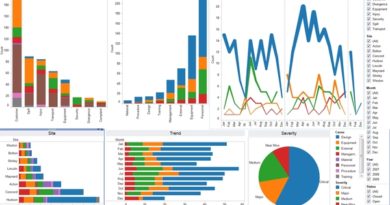How Google Will Change Android Apps
If I ask if you are satisfied with the principle of installing applications from Google Play, most likely you will give an affirmative answer. This is logical. After all, what can you possibly want from the installation process? Google Play is a convenient catalog with a large assortment and an intuitive interface, where most applications are lightweight and install fairly quickly. So, in fact, it would probably not be entirely fair to demand something more. However, Google believes that the app installation process requires some rethinking, and the company has an idea of how to make it better.
Google intends to change the process of installing apps from Google Play, allowing Android users to launch and interact with them before it is completed. To do this, the company began to collect information about how different people use certain applications from Google Play, which sections they refer to in order to understand which code fragments need to be downloaded to the device in the first place. As a result, users will not even realize that the application has not been downloaded yet, but they will already be able to use it to almost full extent.
Downloading Apps from Google Play
Crowdsourcing application usage data immediately after installation will help Google solve several problems at once:
- Speed up the installation process until the application can be launched
- Due to the lower weight, it will shorten the time from the moment you click on the icon to the actual launch
- Reduce the load on the central processor, battery and built-in memory of the smartphone
A bit of an unusual list. But if you can agree in principle with the first two aspects that Google is aiming at, then the third one raises some questions. Still, it is not very clear why an application should suddenly begin to put less load on the smartphone’s hardware only due to the fact that Google was able to change the sequence of loading applications. Perhaps this implies more efficient processing due to the allocation of priority components, but whether this is so or not, the search giant does not specify.
Each application has sections and functions that users do not access immediately after installation. For example, if this is Instagram, then it would be more logical to first download the feed and stories, giving the user the opportunity to consume content before the application is fully installed, and not, for example, the section for creating publications. At the same time, Google wants to make sure that secondary sections can be loaded exactly as needed, and not necessarily. That is, if the Internet connection is not very stable, the download will be delayed.
Why Google is following us
In fact, what Google wants to do is far from new. For example, about 10 years ago, Blizzard studio allowed users to run some of their games before they were fully installed. It’s another matter that Google will implement everything in a more technological way. The search giant decided to use a huge amount of data, having studied user preferences and, based on them, formed a sequence for downloading components. By default, all users will participate in the collection of data, but if you wish, you can opt-out of it in the Google Play settings. Google also provide a vast information based on your collected data such as you can find cheaper flights using Google Flights.
It is not yet known when progressive download of apps will be available to Android users. Still, Google has to collect a fairly hefty amount of data, then analyze it and put it into practice. Moreover, it is not very clear whether the developers will somehow be involved in this initiative or whether Google itself prepares the applications, separates their components into primary and secondary ones, and sets the order of loading to the device. But, one way or another, we will only benefit from this.




